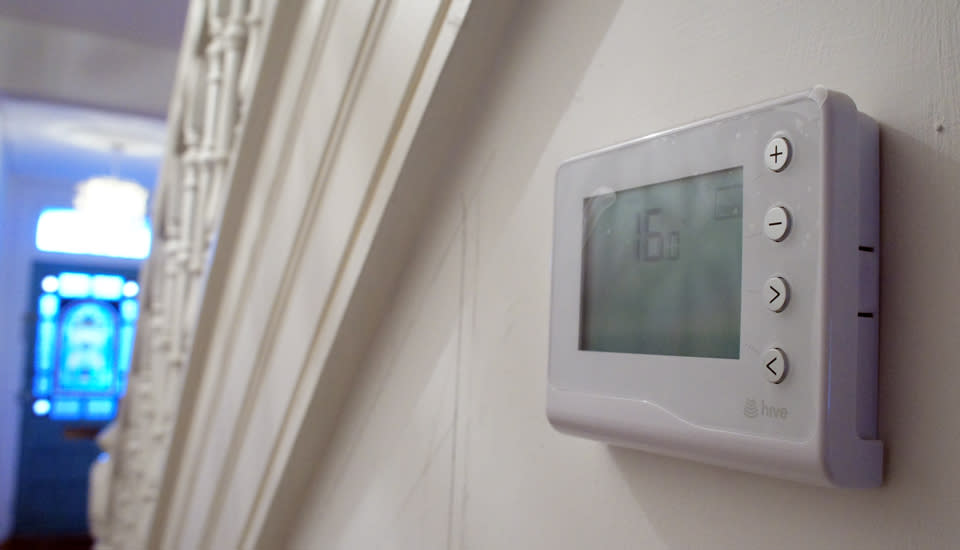Surviving a British winter with a not-so-smart thermostat

Just under a year ago, I had British Gas' Hive smart thermostat bolted on to my home's existing aged central heating system. The easiest thing to do would have been to just review it there and then, but if I'm being honest, it makes more sense to talk about a device like this when you've used it through a rough British winter. Having now endured one in my drafty, freezing cold Victorian house, I think it's the perfect time to start discussing it.
As an aside, this isn't just a British product, even if the company that makes it is now owned by British Gas. In the US, I understand that the equivalent product is Lowe's Iris "Comfort and Control" system, while I've not experienced it first-hand, I'm sure there's very little difference.
Installation required an engineer from British Gas visiting my home for around 90 minutes. First up, an anonymous white box is bolted to the wall by your boiler, followed by a wireless thermostat which is, unfortunately, drilled into your hallway -- it's a legal requirement, but there's nothing stopping you from moving it as soon as the engineer is out the door. The final part of the equation is a small wireless bridge that connects to your home router, which receives signals from the thermostat and sends it to the boiler.
Once you've signed up and installed the app, you can control the thermostat "live" from your phone as well as set a program. Until recently, it was a minor annoyance that you only had four time slots to program, meaning that I was always fiddling with the temperature. Now that the option has been widened to six, it's a little easier to have bursts of heat come on in the middle of the day, but I'd still like another two.

Since I'm a home worker, you can imagine that geolocation is not a feature I've had much need for. It's also the only "smart" feature that you'll find in Hive; there's nothing similar to Nest's learning algorithms or its "Auto-Away" scheduling feature. For me, that's a benefit, since it's a lot easier (and more convenient) to just tweak things straight from my smartphone.
The app itself is designed for iOS and Android devices, with Windows Phone users consigned to using the browser-based control dashboard. The primary screen simply shows your home's current temperature in a small bubble that sits above a larger one that you can swipe to control. The colder you have your home, the bluer this bubble gets, with the inverse making everything redder. A left-sided menu button enables you to cycle through the other two main screens: letting you control the heating schedule and geolocation. It's entirely possible to program your home's system with the app, but it's less of a hassle to do it on the desktop.
Fundamentally, Hive can't compete on fancy-schmancy features in the same way Tado and Nest can. What it provides is the simple, joyous ability to walk out of a club in the small hours of a winter's night and know that I can flick on the heating for when I get home. If I'm ever feeling too warm (rarely in this house, mind), I can turn down the heating without even getting out of bed. At some point, the company is promising to build an internet of things-type device, as well as a smart home security platform, which should appear later this year.
Oh, and there's one other thing that Hive can boast about compared to its rivals: it's £50 ($76) cheaper, which counts for something.
